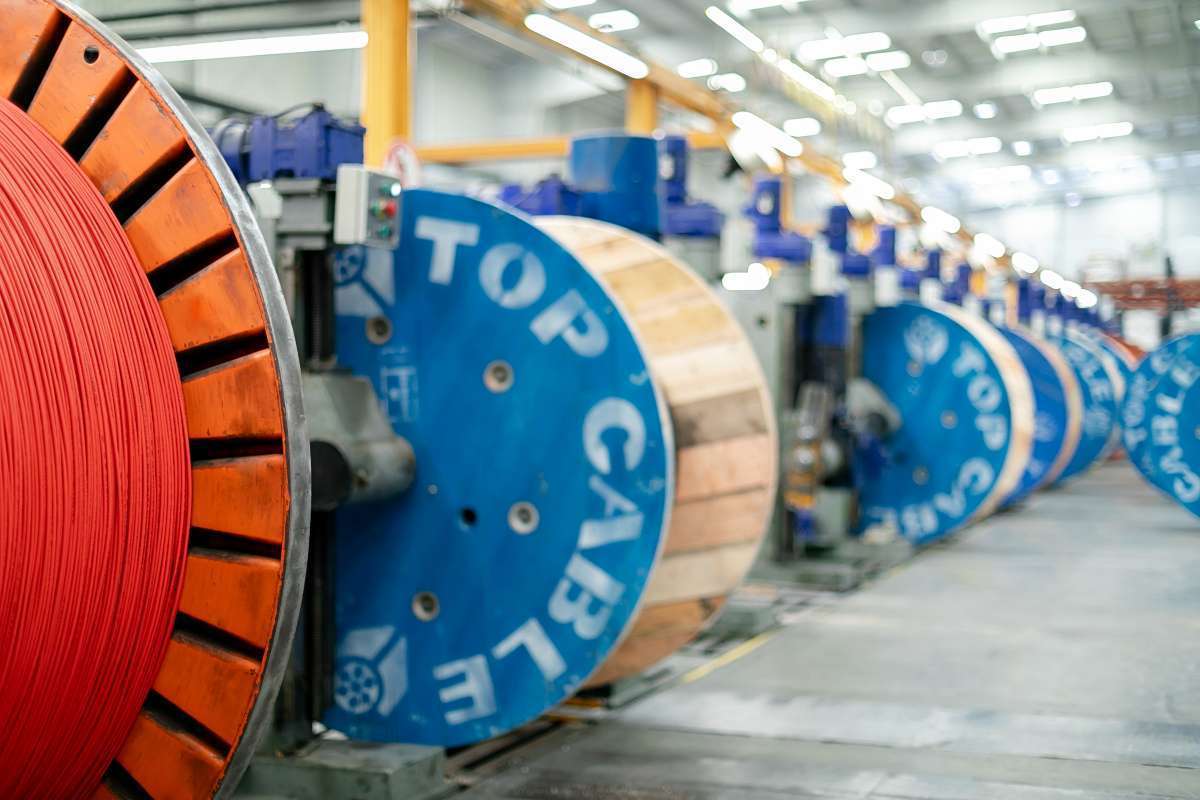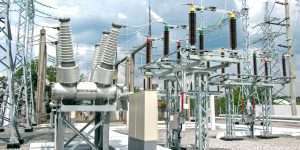A medium voltage cable is a cable used to distribute electricity from power substations to…
Medium voltage cable insulation process
The cable insulation consists of placing a sheath over the conductor to prevent current leakage. In the case of the insulation of a Medium Voltage cable, a type of thermosetting insulation is normally chosen. More specifically, among Top Cable’s range of cables, XLPE (Cross-linked Polyethylene) and EPR (Ethylene Propylene Propylene) predominate.

CABEL INSULATION EN SEVEN STEPS
Top Cable’s range of Medium Voltage cables is manufactured to the highest international standards, and the cable insulation process is divided into seven steps: in-feed, polymer feed, triple extrusion, thickness control, cross-linking, cooling and collection.
1. Input power supply
The driver input coils supply the line uninterruptedly, by means of an input accumulator, ensuring continuous, non-stop operation.
2. Conductor accumulation
Allows incoming splices to be made without stopping the line.

3. Polymer feeding + triple extrusion + thickness control
The feeding of the polymers is carried out entirely through a clean and closed circuit (clean room), ensuring the purity of the materials from the supply packaging to the hopper of the machine.
Extrusion is done through a triple-layer die, allowing perfect contact between the semiconductors, insulation and the total absence of foreign elements between them. Compared to single and double extrusion systems, triple extrusion eliminates the possibility of moisture/dust particles entering any of the three layers, allowing Top Cable to produce quality cables that guarantee high tolerance and meet all related specifications and tests.
The thicknesses of each extruded layer are continuously monitored by an X-ray measuring head, ensuring both standardised thicknesses and perfect concentricity of the layers.
4. Cross-linking
The cross-linking of cable insulation and semiconductors is carried out in a nitrogen atmosphere, in order to eliminate the risk of water absorption, through nine independent temperature zones which allow the cross-linking process to be perfectly adjusted to the characteristics of each material.

5. Cooling and 6. Return of the cable
The final part of the catenary tube is dedicated to the controlled cooling of the already cross-linked cable, ensuring its optimum temperature.
7. Collection and testing
The insulated cable is collected on double winders with an automatic distributor, by means of an auxiliary pull track, which ensures perfect winding, loop by loop and free of excessive tensions. The cable is then subjected to exhaustive laboratory tests to verify its subsequent operation at full performance.

Once these seven steps have been completed, the cable insulation process can be considered to be complete. Top Cable’s X-VOLT® range, approved by the main companies in the sector, adapts to the medium voltage requirements of industry, power generation and distribution companies, and infrastructures in general.
If you would like more information about our range of medium voltage cables, you can consult all the cables available here or contact our sales team to resolve any queries you may have.




